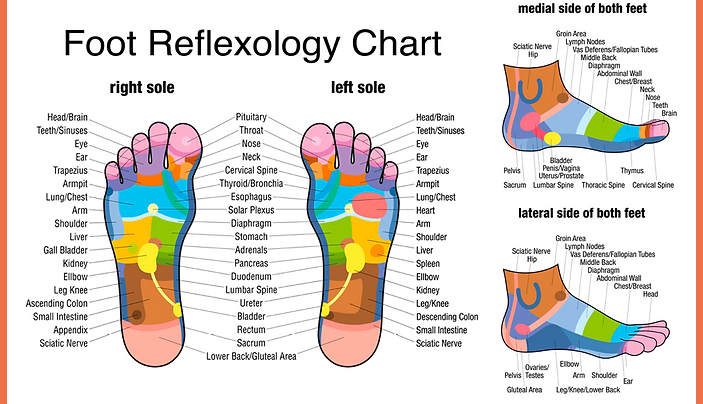
REFLEXOLOGY
Reflexology is a complementary therapy that applies gentle pressure to the feet or hands to stimulate energy pathways in the body.
-
Reflexology works on energy pathways similar to acupuncture
-
Pressing certain points on the feet is thought to help release energy blockages and restore balance in the body
-
Reflexologists believe that certain points on the feet correspond to organs in the body
What is reflexology?
Reflexology is a technique that applies gentle pressure to your feet or hands to bring about a state of relaxation and help the body's own healing process.
Reflexology works in a similar way to acupressure and acupuncture. It is thought that there are certain points on the feet and hands that correspond to the organs and glands in the body. So by pressing and massaging these points it can stimulate energy pathways in the body. If any energy pathways are blocked reflexology aims to unblock them, allowing the energy to flow freely again which aims to restore balance to the body.
If your reflexologist feels tender, sensitive or crunchy sensations on the feet they say it can indicate that an area of your body is out of balance. By pressing the points and working them gently, reflexologists believe that it will kickstart your body's natural healing powers.
On your first visit, your reflexologist will ask you some general questions about your health, lifestyle and medical history. They might ask to speak to your GP if they are concerned that reflexology could interfere with any other treatment or drugs that you are having.
A reflexology session usually lasts between 45 to 60 minutes.
You usually lie down or sit in a reclining chair to have the treatment.
Most people say having reflexology feels relaxing and soothing. Pressure on some areas may be uncomfortable or slightly painful this relates to blockages in energy flow in a particular part of your body.




